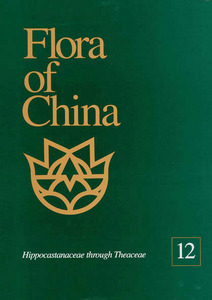Sapindaceae
Nianhe, Xia, and Gadek, Paul A. (2007) Sapindaceae. In: Wu, Zhengyi, Raven, Peter H., and Hong, Deyuan, (eds.) Flora of China: Hippocastanaceae through Theaceae. Science Press, Beijing, China, pp. 5-24.
![[img]](https://researchonline.jcu.edu.au/16172/3.hassmallThumbnailVersion/16172_Nianhe_%26_Gadek_2007_Cover.jpg)
|
Image (JPEG) (Book Cover)
- Cover Image
Download (48kB) |
|
|
PDF (Published Version)
- Published Version
Restricted to Repository staff only |
Abstract
[extract] Trees or shrubs (or woody vines with tendrils in Cardiospermum and allied genera), rarely herbaceous climbers. Indumentum usually of simple hairs, often glandular on young parts, buds, and inflorescences. Leaves alternate, usually estipulate; leaf blade pinnate or digitate, rarely simple; leaflets alternate to opposite, entire or dentate to serrate. Inflorescence a terminal or axillary thyrse; bracts and bracteoles small. Flowers unisexual, rarely polygamous or bisexual, actinomorphic or zygomorphic, usually small. Sepals 4 or 5(or 6), equal or unequal, free or connate at base, imbricate or valvate. Petals 4 or 5(or 6), sometimes absent, free, imbricate, usually clawed, often with scales or hair-tufted basal appendages. Disk conspicuous, fleshy, complete or interrupted, lobed or annular, rarely absent. Stamens 5–10(–74), usually 8, rarely numerous, variously inserted but usually within disk, often exserted in male flowers; filaments free, rarely connate; anthers dorsifixed, longitudinally dehiscent, introrse; staminodes sometimes present in carpellate flowers, but filaments shorter and anthers with a thick wall, indehiscent. Ovary superior, (1–)3(or 4)-loculed; ovules 1 or 2(or several) per locule, placentation axile, rarely parietal, anatropous, campylotropous, or amphitropous; style usually apical (terminal), semigynobasic in Allophylus [gynobasic in Deinbollia Schumacher & Thonning]; stigma entire or 2 or 3(or 4)-lobed, usually rudimentary in male flowers. Fruit a loculicidal capsule, berry, or drupe, or consisting of 2 or 3 samaras, often 1-seeded and 1-loculed by abortion. Seeds 1(or 2 or more) per locule; testa black or brown, hard, often with a conspicuous fleshy aril or sarcotesta; embryo curved, plicate, or twisted, oily and starchy; endosperm usually absent. 2n = 20–36.
| Item ID: | 16172 |
|---|---|
| Item Type: | Book Chapter (Research - B1) |
| ISBN: | 978-1-930723-64-1 |
| Date Deposited: | 21 Nov 2011 02:49 |
| FoR Codes: | 06 BIOLOGICAL SCIENCES > 0603 Evolutionary Biology > 060310 Plant Systematics and Taxonomy @ 100% |
| SEO Codes: | 96 ENVIRONMENT > 9608 Flora, Fauna and Biodiversity > 960805 Flora, Fauna and Biodiversity at Regional or Larger Scales @ 100% |
| Downloads: |
Total: 122 Last 12 Months: 4 |
| More Statistics |



